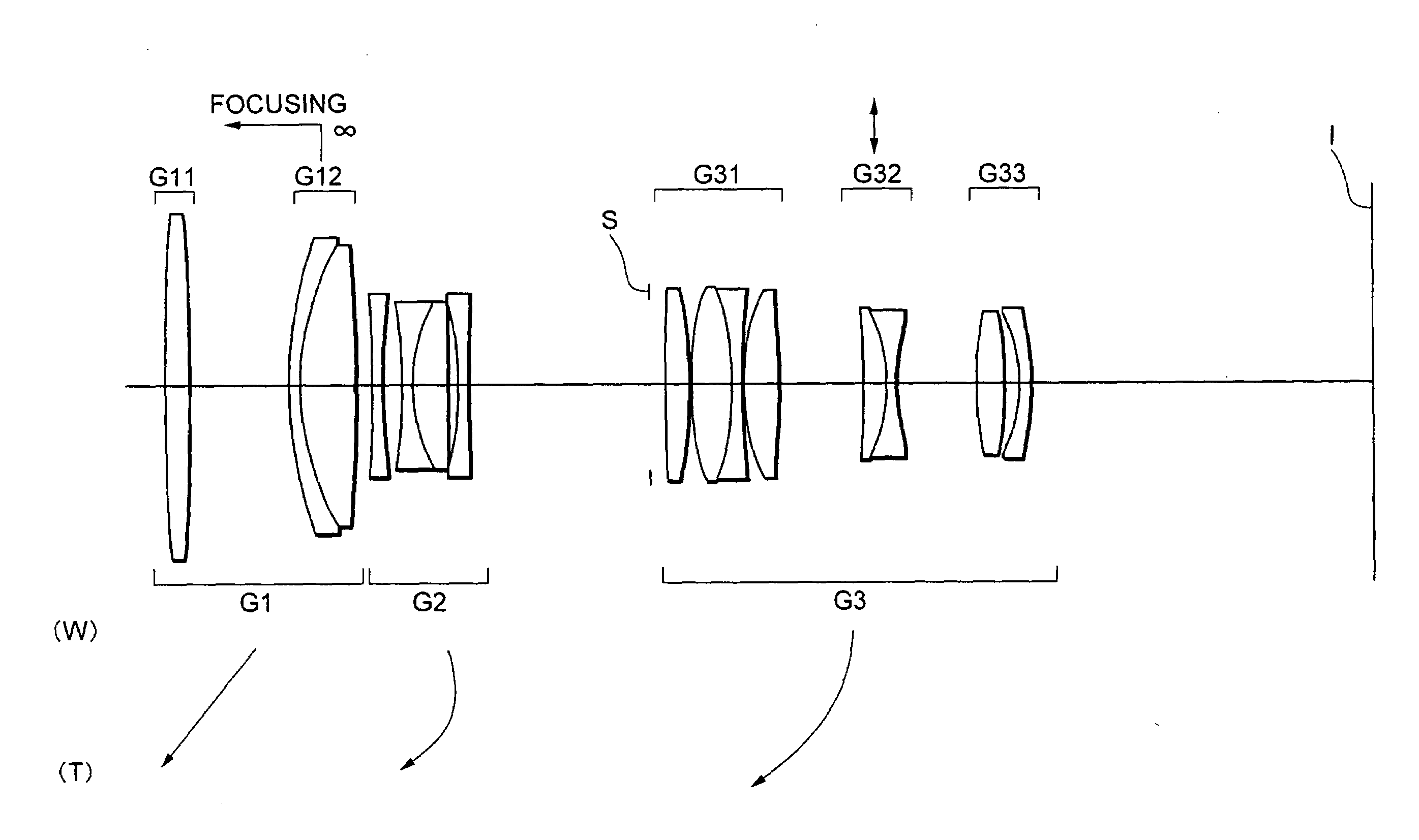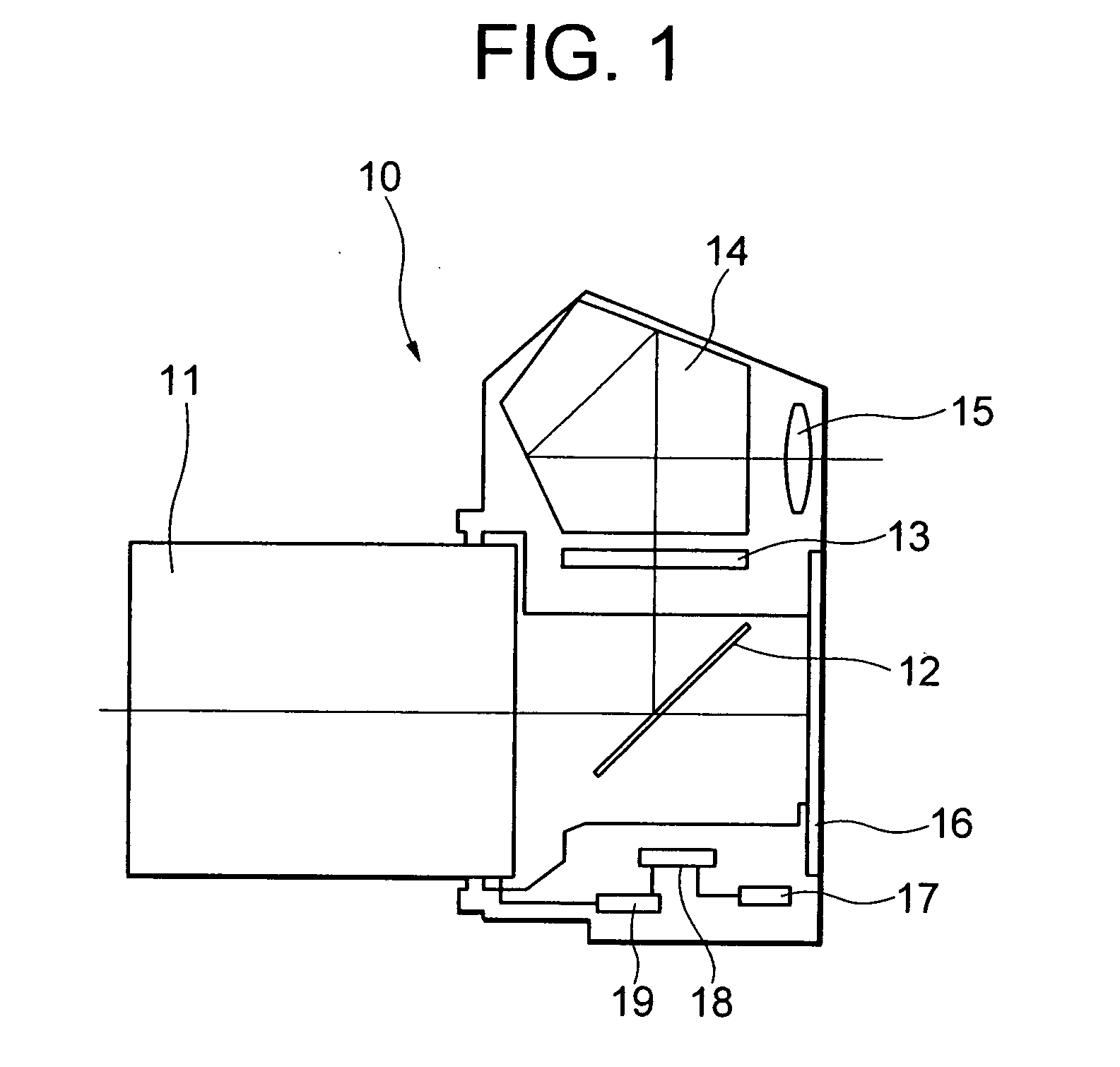Zoom lens system with vibration reduction function
a technology of zoom lens and function, applied in the field of zoom lens system, can solve the problems of large vibration reduction mechanism, difficult to make the zoom lens system small, complicated zooming mechanism,
- Summary
- Abstract
- Description
- Claims
- Application Information
AI Technical Summary
Problems solved by technology
Method used
Image
Examples
example 1
[0065]FIG. 2 is a diagram showing a lens configuration of a zoom lens system with a vibration reduction function according to Example 1.
[0066]In FIG. 2, the zoom lens system with a vibration reduction function is composed of, in order from an object, a first lens group G1 having positive refractive power, a second lens group G2 having negative refractive power, and a third lens group G3 having positive refractive power. Upon zooming from a wide-angle end state (W) to a telephoto end state (T), the first lens group G1 and the third lens group G3 are moved to the object, and the second lens group G2 is moved at first to the image plane I then to the object such that a distance between the first lens group G1 and the second lens group G2 increases, and a distance between the second lens group G2 and the third lens group G3 decreases.
[0067]The first lens group G1 is composed of, in order from the object, an 11 lens group G11 having positive refractive power and a 12 lens group G12 havin...
example 2
[0081]FIG. 6 is a diagram showing a lens configuration of a zoom lens system with a vibration reduction function according to Example 2.
[0082]In FIG. 6, the zoom lens system with a vibration reduction function is composed of, in order from an object, a first lens group G1 having positive refractive power, a second lens group G2 having negative refractive power, and a third lens group G3 having positive refractive power. Upon zooming from a wide-angle end state (W) to a telephoto end state (T), the first lens group G1 and the third lens group G3 are moved to the object, and the second lens group G2 is moved at first to the image plane I then to the object such that a distance between the first lens group G1 and the second lens group G2 increases, and a distance between the second lens group G2 and the third lens group G3 decreases.
[0083]The first lens group G1 is composed of, in order from the object, an 11 lens group G11 having positive refractive power and a 12 lens group G12 havin...
example 3
[0093]FIG. 10 is a diagram showing a lens configuration of a zoom lens system with a vibration reduction function according to Example 3.
[0094]In FIG. 10, the zoom lens system with a vibration reduction function is composed of, in order from an object, a first lens group G1 having positive refractive power, a second lens group G2 having negative refractive power, and a third lens group G3 having positive refractive power. Upon zooming from a wide-angle end state (W) to a telephoto end state (T), the first lens group G1 and the third lens group G3 are moved to the object, and the second lens group G2 is moved at first to the image plane I then to the object such that a distance between the first lens group G1 and the second lens group G2 increases, and a distance between the second lens group G2 and the third lens group G3 decreases.
[0095]The first lens group G1 is composed of, in order from the object, an 11 lens group G11 having positive refractive power and a 12 lens group G12 hav...
PUM
 Login to View More
Login to View More Abstract
Description
Claims
Application Information
 Login to View More
Login to View More - R&D
- Intellectual Property
- Life Sciences
- Materials
- Tech Scout
- Unparalleled Data Quality
- Higher Quality Content
- 60% Fewer Hallucinations
Browse by: Latest US Patents, China's latest patents, Technical Efficacy Thesaurus, Application Domain, Technology Topic, Popular Technical Reports.
© 2025 PatSnap. All rights reserved.Legal|Privacy policy|Modern Slavery Act Transparency Statement|Sitemap|About US| Contact US: help@patsnap.com



